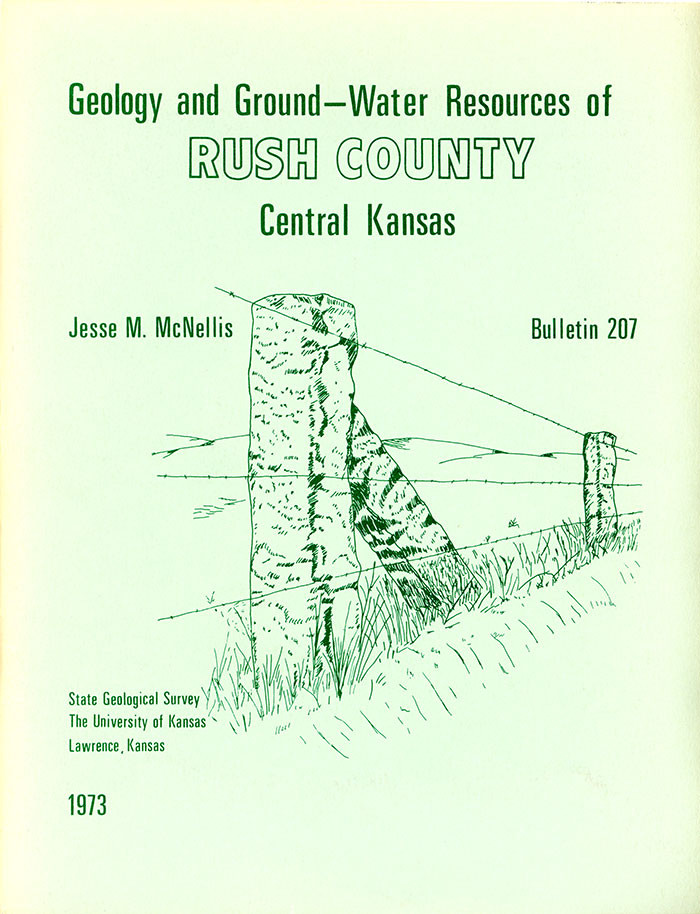Geology and Ground-Water Resources of Rush County, Central Kansas
By Jesse M. McNellis

Originally published in 1973 as Kansas Geological Survey Bulletin 207. This is, in general, the original text as published. The information has not been updated. An Acrobat PDF version (34.4 MB) is also available.
You may also wish to visit our web site on the Rush County geologic map.
Abstract
Rush County, which comprises an area of 724 square miles in central Kansas, is principally in the Smoky Hills section of the Great Plains physiographic province. The north third of the county is in the Smoky Hill River drainage basin and the rest is in the Arkansas River drainage basin. The average annual precipitation at Bison is 22.21 inches, and the average growing season is 174 days. The population of the county in 1970 was 5,117, of which 36.6 percent was rural. Agriculture is the dominant economic activity in the county and the chief mineral resources are ground water, oil and gas, and helium.
All rocks that crop out in Rush County are sedimentary. They include the Greenhorn Limestone, Carlile Shale, and Niobrara Chalk of Cretaceous age; the Ogallala Formation of Pliocene age; and eolian, fluvial, and colluvial deposits of Pleistocene age.
The principal aquifers are the Dakota Formation, which underlies the entire county, and the Pleistocene deposits in the stream valleys. Yields from wells in the Dakota generally are adequate for stock and domestic purposes, but the chemical quality of the water may be considered marginal for most uses. Wells obtaining water from the Dakota range in depth from 80 feet in the southeastern part of the county to a reported 530 feet in the northwestern part.
The Pleistocene aquifer in Walnut Creek valley yields 290 to 1,200 gallons per minute to wells for irrigation. Yields as great as 1,500 gallons per minute have been reported. Pleistocene deposits in other stream valleys yield adequate supplies for stock and domestic purposes. Water from Pleistocene deposits commonly is hard to very hard, but is satisfactory for most uses.
Recharge to the aquifers is principally from local precipitation. The aquifer in Walnut Creek valley receives sizable amounts of recharge during periods of high flow in Walnut Creek; perhaps as much as 1 1/3 feet of water per acre was recharged from a flood in 1959.
Kansas Geological Survey, Geology
Placed on web Aug. 22, 2008; originally published July 1973.
Comments to webadmin@kgs.ku.edu
The URL for this page is http://www.kgs.ku.edu/General/Geology/Rush/index.html